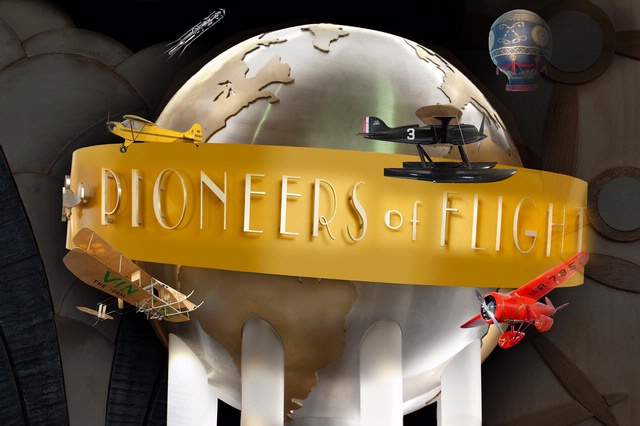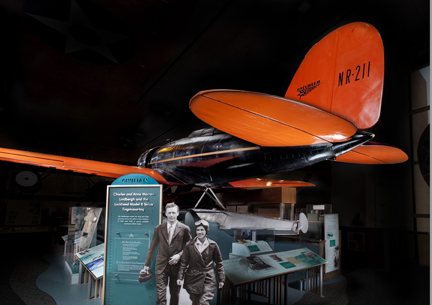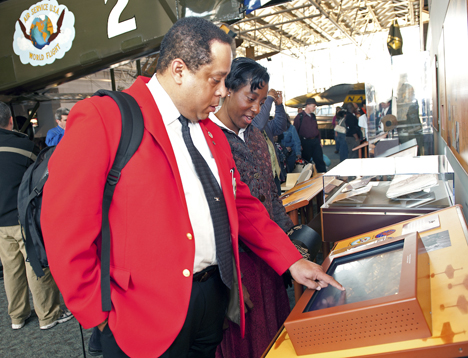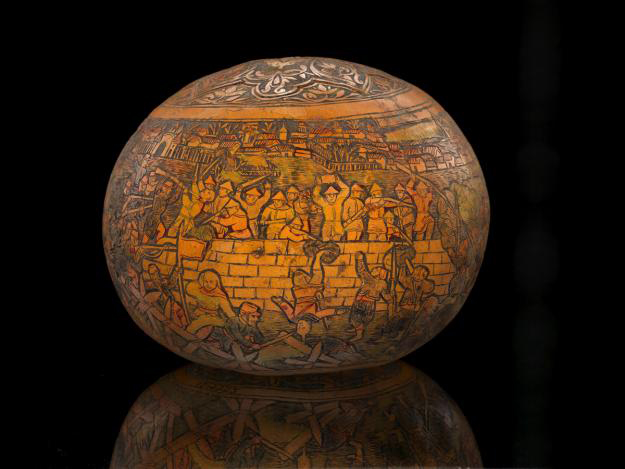From the Secretary: Increasing and diffusing knowledge in the digital world
I recently was in New York City at the American Indian Museum’s Heye Center for the opening of Infinity of Nations: Art and History in the Collections of the National Museum of the American Indian. It is a spectacular permanent exhibition of nearly 700 works of Native art from North, Central and South America that speaks to the cultural heritage of the people who lived in the Americas before Europeans arrived.
Visitors, or anyone in the world, can now navigate through Infinity of Nations from the palms of their hands, using the Smithsonian’s first bilingual mobile app designed for a permanent exhibit. The Heye Center has coupled the popular exhibit with the free app, available from the iTunes App Store, or distributed to visitors onsite using iPod touch. The app highlights 60 of the exhibition objects, and using its interactive floor map, visitors can view case drawings and images while listening to an audio tour.
The scope of the collection shown in the app ranges from two re-fluted Clovis points dating from 11,000 B.C.—among the oldest Paleoindian artifacts displayed in any museum—to an exquisite Quechua carved gourd, meticulously pyro-engraved with nautical specimens by artist Percy Medina in Peru in 2008. Tribes throughout the Americas are represented, ranging from the Inuit of the Arctic to the Yámana and Selk’nam of Tierra del Fuego. I have the app and I enjoy returning to the exhibition I saw firsthand; it is informative, educational and easy to navigate.
Retracing the Flights of Pioneers
Getting to the heart of the stories behind aircraft and artifacts on display, the Barron Hilton Pioneers of Flight Gallery, which opened November 19 at the Air and Space Museum, updates the original Pioneers gallery that opened in 1976. The former gallery covered only the aircraft, but now it focuses on the inspiring men and women who pioneered flight. New research combined with pilots’ personal possessions and digital interactive activities offer fresh ways for people to experience the rapid advances of aviation and rocketry during World War I and World War II.

The Barron Hilton Pioneers of Flight Gallery, located in the Air and Space Museum's National Mall building, is an exhibition about the growth and influence of aviation and rocketry during the 1920s and 1930s. The fully-renovated gallery opened to the public Nov. 19, 2010. (Photo by Eric Long)
Individuals, such as Charles Lindbergh and his wife Anne Morrow Lindbergh, challenged the social and technological limitations of flight, and the couple’s journeys together exploring air routes between continents made history both in the headlines of the times and as told in Anne’s writings. The sleek Lockheed Sirius “Tingmissartoq” flown by the Lindberghs is part of the exhibition, as well as artifacts never before on display, such as their snowshoes, fishing gear and crampons.
Six interactive activities on touch-screen displays in the gallery and an online site bring the exhibition to life. “Packing for the Unknown with the Lindberghs,” a decision-making game, lets you choose what you may need for your flight, and compares your choices with what the Lindberghs actually packed. Having packed for my trip to Antarctica, I was amazed by how little the Lindberghs took along when flying along the coast of the “White Continent.”

In 1931, Charles and Anne Morrow Lindbergh flew to the Orient in this Lockheed Sirius – the first aircraft to reach the Far East by way of the "great circle route". Lindbergh described their trip as a vacation, with "no start or finish, no diplomatic or commercial significance, and no records to be sought". In 1933, while Lindbergh was technical advisor for Pan American Airways, the Lindberghs used the same Sirius to cross the Atlantic, researching flight paths for Pan American Airways. In Godthaab, Greenland, an Inuit boy named the aircraft Tingmissartoq, meaning "one who flies like a bird". The aircraft bears this name, painted on the side by the same Inuit boy. (Photo by Eric Long)
Other Exciting Initiatives
It is exciting to see our curators take the initiative in increasing usage of mobile apps, interactive websites, and touch screen displays to reach learners in ways not previously possible.
Impressive examples include the website for African Art’s African Mosaics: Celebrating a Decade of Collecting, the slideshow depicting paintings featured in Alexis Rockman: A Fable for Tomorrow at American Art, and the videos on YouTube and the blog for Cooper-Hewitt’s Tangible Earth. Over in Natural History’s Hall of Human Origins, I have been transformed into a Neanderthal hundreds of thousands of times at the exhibition’s morphing station; our first app, the MEanderthal application, has had nearly 200,000 downloads.

A visitor uses a touchscreen device during the 2010 Pioneers of Flight Family Day at the Air and Space Museum. (Photo by Mark Avino)
Our Continuing Commitment to Digital Innovation
Two years ago we made clear our commitment to our scholars, scientists and curators to help them move their innovative ideas about digital technology to reality through the Smithsonian 2.0 Fund. Many creative projects have been supported so far and because of popular demand, we are continuing this program. Grants between $10,000 and $30,000 will be awarded, so if you have project ideas, submit a proposal online via Prism or SharePoint.
Not long ago Ann Speyer and her colleagues organized a workshop on use of digital technology at the Smithsonian. We knew something different was happening when the room chosen for the workshop, which held 200 people, was filled to overflowing and hundreds more participated on the Web. The ideas discussed for the future made it clear that we are just beginning to explore the possibilities for using digital technology. I suspect James Smithson, a man imbued by the new ideas of the Enlightenment, would get a kick out of this new twist on our time-honored mission to increase and diffuse knowledge.
Posted: 11 January 2011
- Categories:




